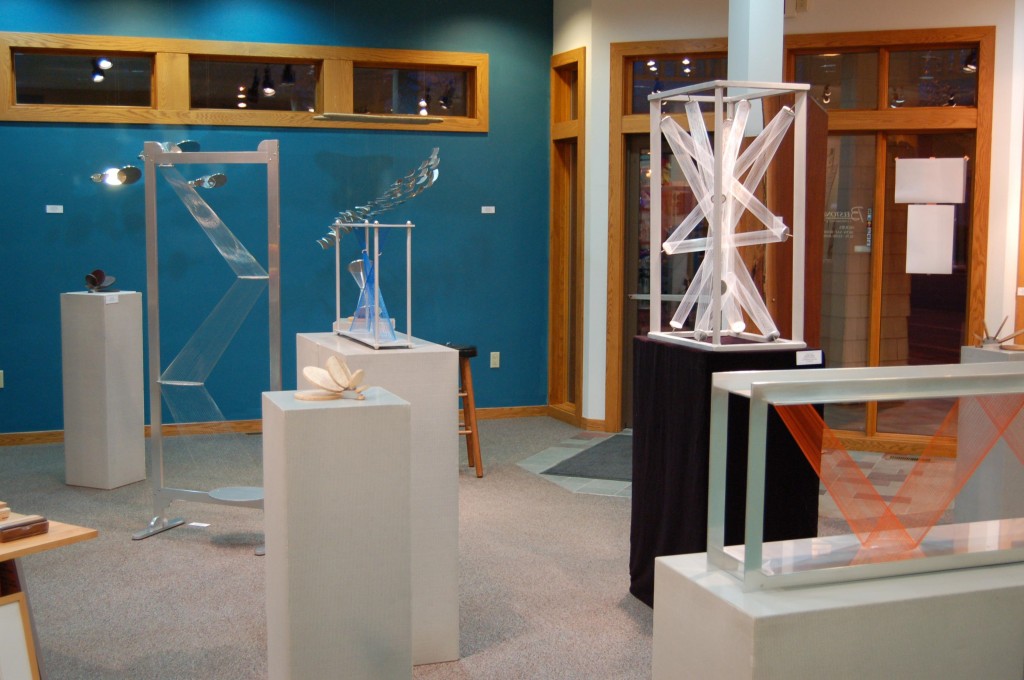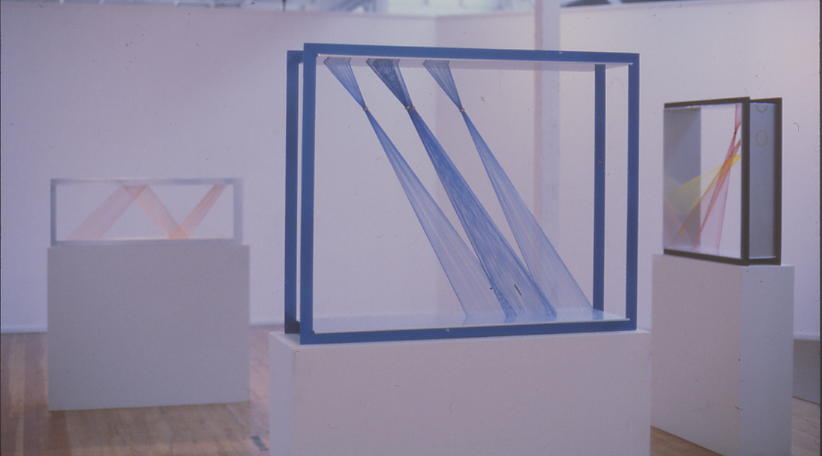
Craig Tandy’s work is firmly rooted in the Constructivist tradition. It contains fundamental precepts, which are continually re-examined, restated and expanded upon. His, is an art that is concerned with the technological process, reduction and the non-objective image. Order, logic, the purity of mathematics and physics and the applied sciences overlap. It is the foundation for a rich visual language, which at the same time, is demanding of the viewer.
Gabo proclaimed in the Realist Manifesto of 1920, that “space and time are the only forms upon which life is built and hence art must be constructed.” The conceptual framework has transcended the doctrinaire political and social upheaval of the time, to stimulate tradition, not as a fossilized or nostalgic homage, but one which is periodically revitalized by fresh perception, as by Kenneth Martin, George Rickey, Ruth Vollmer and others.
Tandy’s work is in the nature and order of things; a systematic and analytical examination of simple structures and forms, re-occurring in a variety of states and situations. Tandy successfully marries technology and the visual, by circumventing the usual pitfalls. He utilizes the potentials of his materials and deals with them in a straightforward manner without unnecessary embellishment. It requires an orderly work progression and craftsmanship, which is carried through with a feeling of spontaneity and wit.
The majority of the works deal with the nature of movement in real (kinetic) and static states, encompassing a variety of modes; natural, mechanical, the predictable and unpredictable. In many of these works polycarbonate, aluminum and nylon are used as the active agents, materials Tandy employs frequently because of their flexibility, tensile strength and refractive qualities. He applies them in numerous ways; formal and informal in two and three dimensions, behavioural situations (kinetic works), and as a surface for colour, or left clear, permitting an interplay of light and transparent surfaces.
Tandy’s strength lies in the simplicity of the visual presentation, which can be pointed to the obvious, but not simplistic. It is a device and means for an elegant and direct statement, applied at each stage of the work, from conception, drawing, maquette, through to completion. It is an art which is neither forward-looking nor introspective. Tandy observes, translates and records, anticipating natural and unnatural phenomena, from the perception of the microscopic to the macrocosm.
Dr. Ihor Holubizky
Art and Cultural Historian
Note: You are invited to email Craig Tandy regarding possible exhibitions. As well, Craig Tandy welcomes consideration regarding private, public and corporate collections/installations and he would be excited to produce for you, concepts, drawings and maquettes, given the site specifics.

